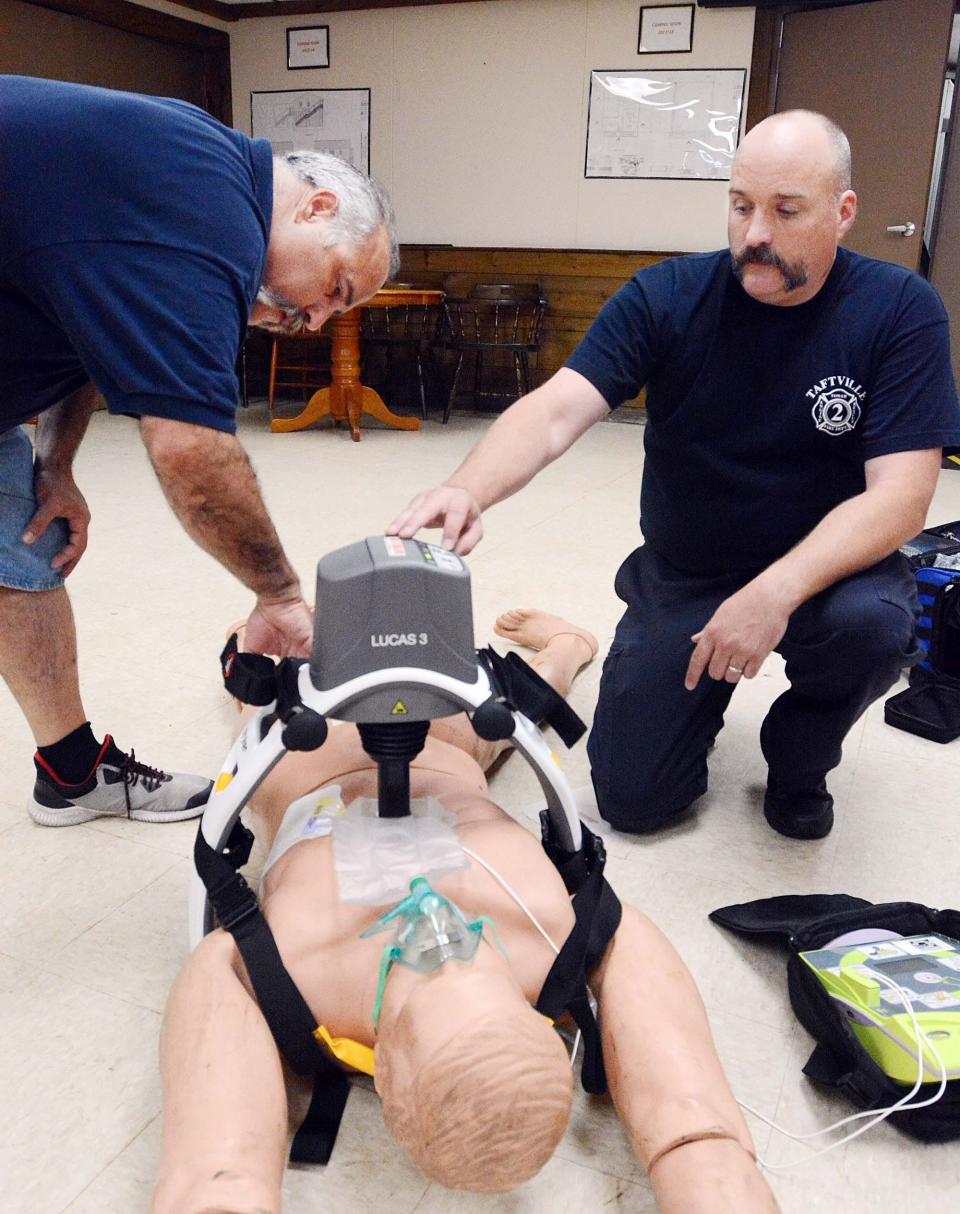Killingly wants to bolster volunteer fire departments with federal ARPA money. Here's how.
KILLINGLY ― The town is fine-tuning an amended funding application that, if approved, would use a chunk of federal COVID-19 relief funding to buy new radio systems and automatic CPR devices for Killingly’s volunteer fire departments.
The Town Council fiscal subcommittee next month is expected to discuss the use of $200,000 in American Rescue Plan Act, or ARPA, funding for the purchase of three new portable radio units and one LUCAS machine for each of the town’s six departments: Danielson, Attawaugan, South and East Killingly, Dayville and Williamsville.
The funding proposal, which must be approved by the Town Council, originated as a much more compact plan with the Attawaugan department submitting a $201,000 request to essentially help overhaul its entire radio capabilities, Town Manager Mary Calorio said.
“We quickly recognized that we could expand the request town-wide and use the money to have a more comprehensive impact,” she said.
Currently, departments use a combination of portable and mobile – or vehicle-mounted – radios to communicate internally and with neighboring agencies, along with Quinebaug Valley Emergency Communications dispatchers.
... if we did this on our own, that’d be a very expensive project.
Attawaugan Fire Chief Matt Desrosiers
Summer campPlainfield's summer camp is back this year. Why is its future never quite guaranteed?
“The new mobiles will tie into the state’s Land Mobile Radio Network,” Fire Marshal Randy Burchard said. “That means a Killingly department will be able to talk with firefighters or other personnel in Bridgeport, Westport or any other agency in Connecticut that uses that system.”
Calorio said the upgrade will be useful in large-scale emergency incidents, like hurricanes, in which multiple agencies are coordinating from across the state.
“Right now, they have to use cell phones in Killingly to do that,” she said. “And we know from experience that tower service can get jammed up and power can be lost in large weather events.”
Attawaugan Fire Chief Matt Desrosiers described the new radios as the “latest and the greatest.”
Gender affirmationUCFS offers binders for trans, non-binary, and genderfluid clients
“They’re built to allow us to plan for the future and lets us keep up with the times,” he said. “And if we did this on our own, that’d be a very expensive project.”
The LUCAS chest compression system, like one bought by the Taftville Fire Department in Norwich three years ago, is a strap-on mechanism that delivers 102 strikes a minute to a distressed patient’s heart. The rear portion of the machine straps into place under a patient’s back while a suction cup piston built into the device’s front scaffolding compresses the chest like a trip-hammer with the push of a button.
The device must be charged for four hours for each hour of use, though it comes with two batteries and a line that can be plugged into a standard outlet.

Manual CPR, when done correctly, can be an exhaustive endeavor that can quickly fatigue a first responder, Desrosiers said.
“And as someone gets tired, the quality of CPR goes down,” he said. “On top of that, there are just not enough department volunteers in town to go around. That means you can’t count on another crew coming in to help very quickly.”
KB Ambulance, the town’s primary pre-hospital care provider, possesses a LUCAS device, but its headquarters is the furthest away from his department, Attawaugan Deputy Fire Chief Shayne Kettle said.
Street Stuff CycleIn Greeneville, former church and hardware store now has motorcycles
“I’ve been on codes when I’ve done CPR for 6-8 minutes by myself,” he said. “What this device does is, once you get it strapped on a patient and hit start, is free you up to do everything else, like use a defibrillator.”
Town Councilors last month approved spending $1.8 million in ARPA money on a range of municipal and community projects. The council's vote leaves roughly $2.1 million in federal funding to be dispersed.
Calorio said three potential big-ticket allotments are still being researched, including the fire department piece, the construction of a regional emergency storage facility and funding related to the cost of moving the community center.
John Penney can be reached at jpenney@norwichbulletin.com or at (860) 857-6965.
This article originally appeared on The Bulletin: ARPA money could help Killingly's volunteer fire departments. How?

